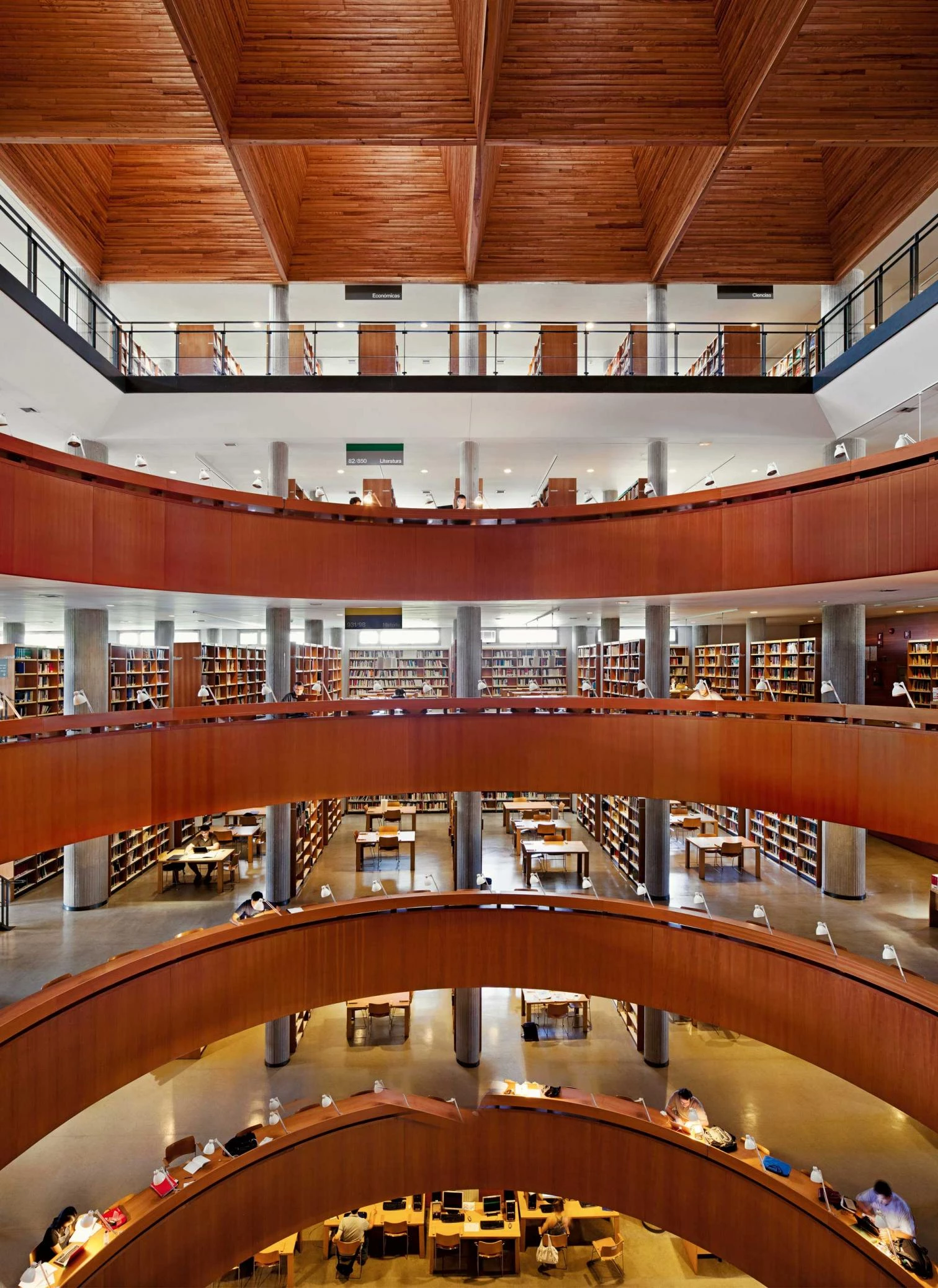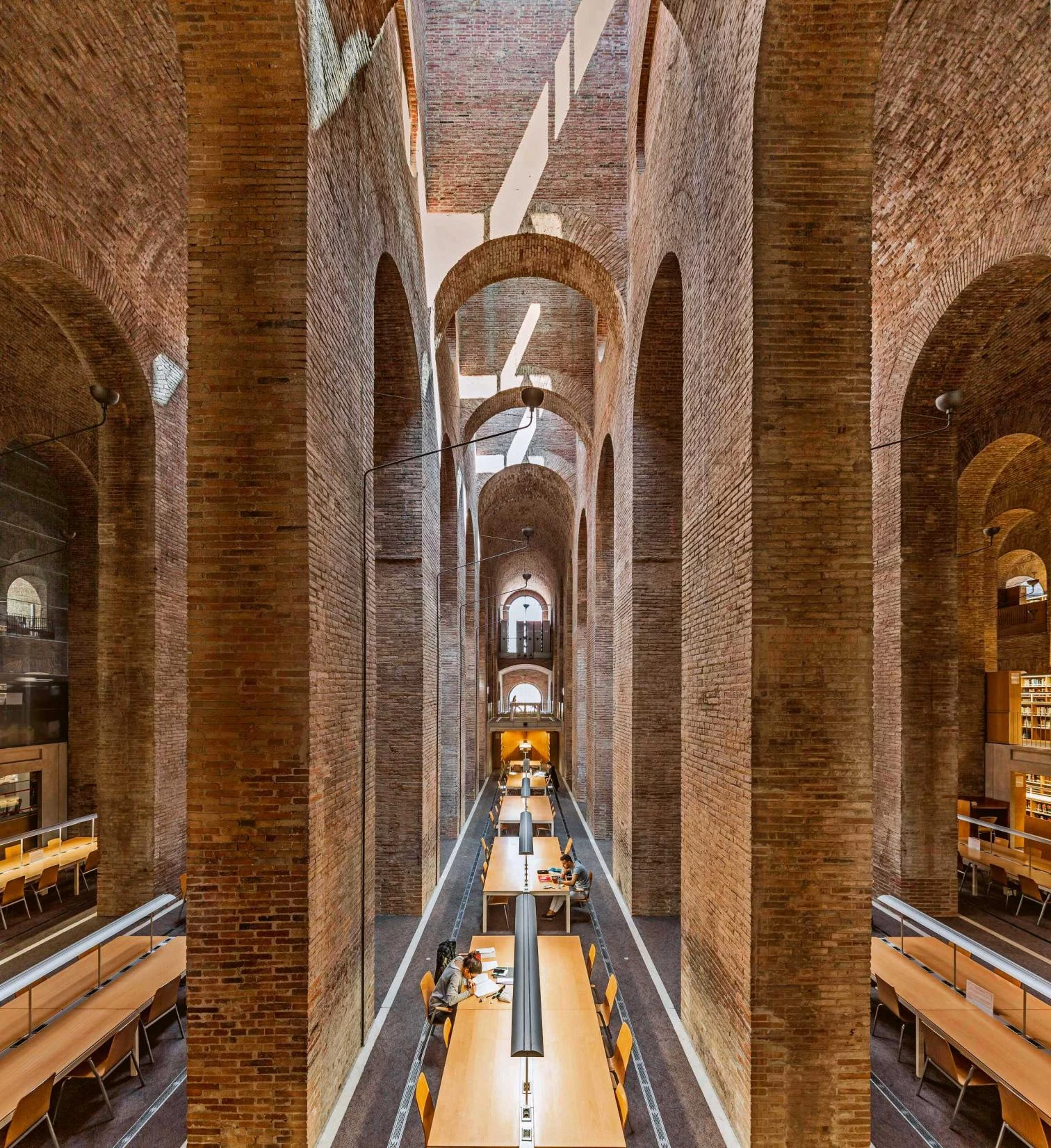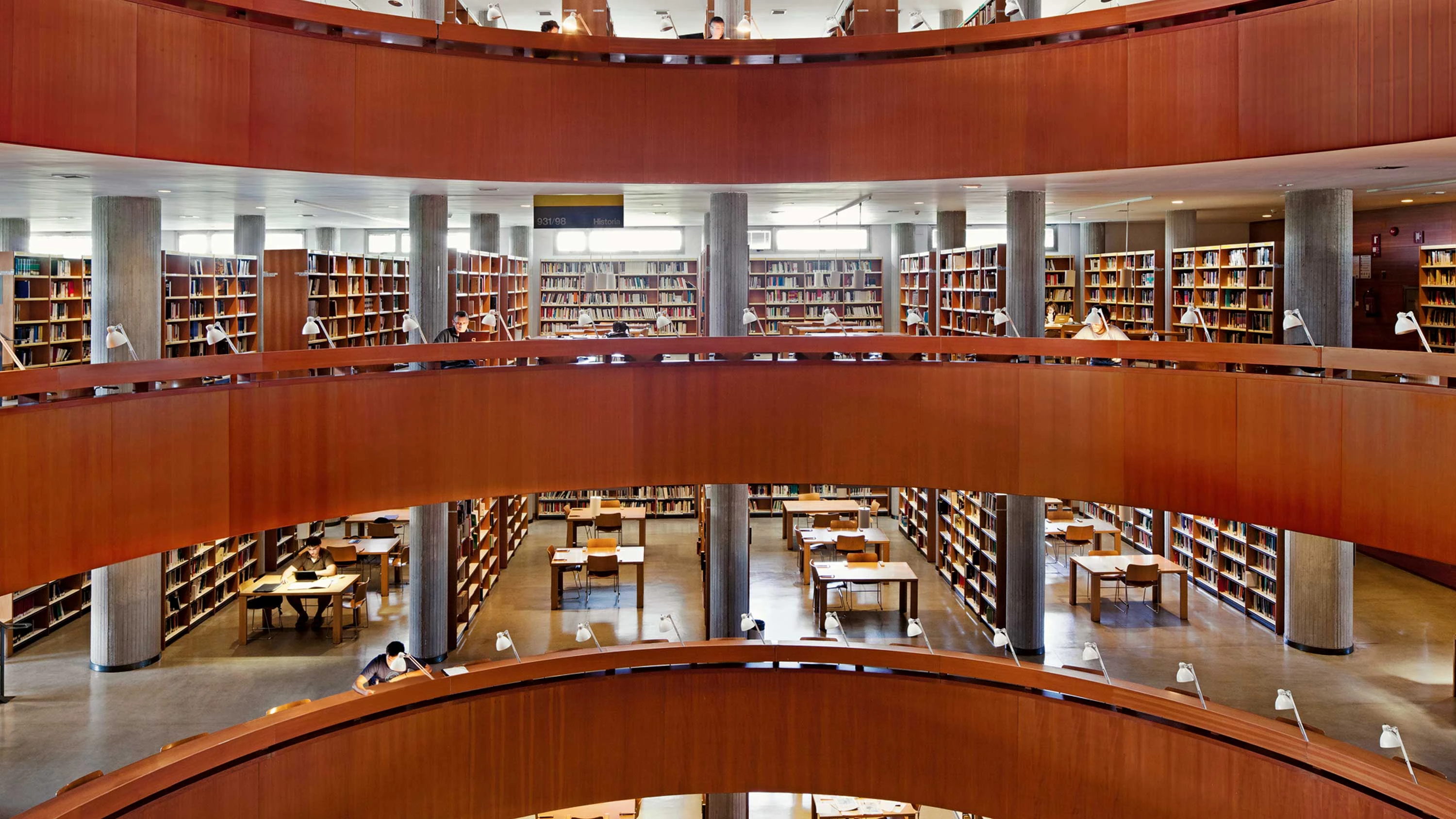Civic readings
Public Libraries in Spain

Jose Ignacio Linazasoro, UNED Library, Madrid
Libraries are perhaps the most famous buildings in the West. They have probably also been the most useful. Certainly no one will question their worth as symbols of an entire culture, if not an entire civilization. For our civilization – or at least for the most memorable part of it – books were the screens that diffused the lights of reason. Because of this, libraries were imagined as drawn utopias, like the Bibliothèque Royale of Étienne-Louis Boullée, or as literary utopias, like Jorge Luis Borges’s Library of Babel. At the same time, they were built in the form of ‘national libraries,’ those bibliographic depositories and patriotic monuments that the great capitals of the world have never wished to do without.
The fame and renown of libraries, or at least the respect that they still deserve from us, does not however save them from becoming anachronisms. For the new generations that are being brought up in easy, superficial, indiscriminate access to information online, books can come to be mere mute decorations in some homes, or rather monstrous – because physical and weighty – objects safeguarded in certain solemn buildings. If useful knowledge is not to be found in books anymore, neither is it in libraries, and so it is that, having lost their original function, these buildings need to be subjected to a serious re-thinking, from their very foundations. What purpose does a library serve in the digital era?
The magazine Arquitectura Viva addressed this matter in issue 135, and thirteen years later re-raises the question to present some attempts to answer it. In the digital universe, the library is no longer the primary source of knowledge, but it is still a symbol of knowledge. Neither is it a place for research, but it does offer a haven for study for anyone needing respite from domestic chores, for example, or simply wanting peace and quiet. For hardly anyone does it remain a wonderful labyrinth for infinite readings, but many now see it as a friendly space for socializing, a welcoming, open enclave conducive to the interaction of different social classes. And although it has ceased to function as a vast revered temple of bookish culture, a library can continue to be an oasis for timeout or a theme for debate, besides an excuse to design good civic architecture.
Good architecture for people who frequent books and gather around them is exemplified by the trio of Spanish libraries selected for this dossier: the García Márquez Library in the city of Barcelona, a work of Suma Arquitectura; the Public Library of Córdoba, by Paredes Pedrosa; and the one of Molins de Rei in Barcelona province, by Antonio Montes Gil. In all three projects, the sanctum of knowledge maintains its social and civic mission, and embraces the digital era while standing as a reminder that books are not about to disappear from our lives.

Clotet & Paricio, UPF Library, Barcelona, Spain.






